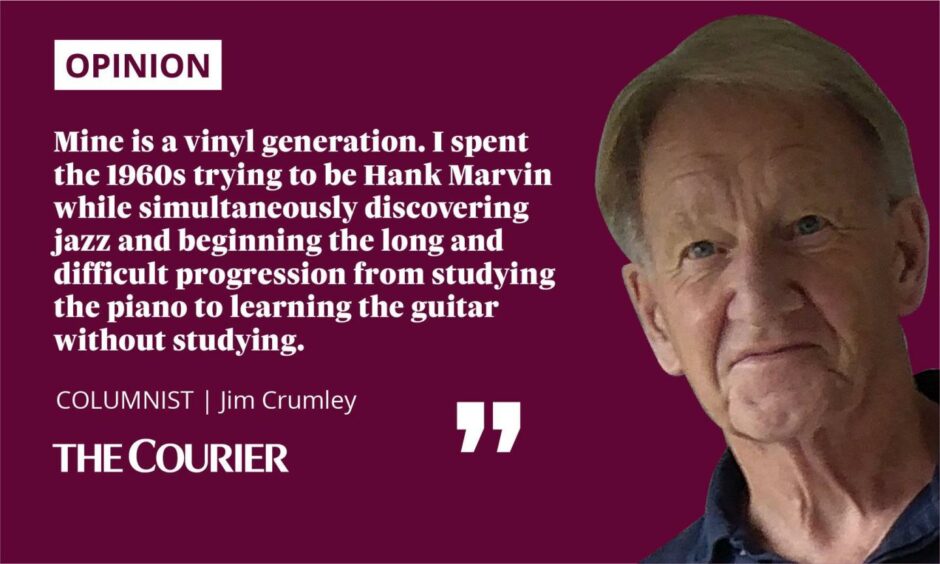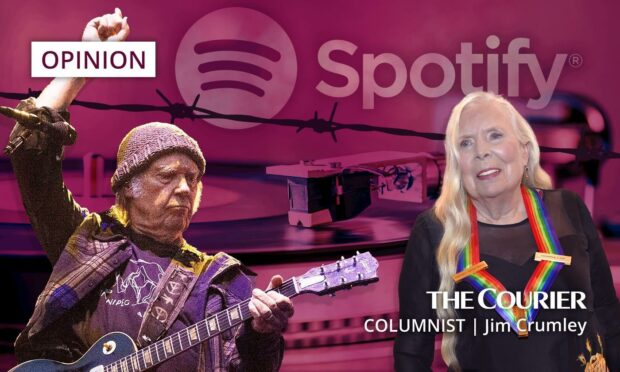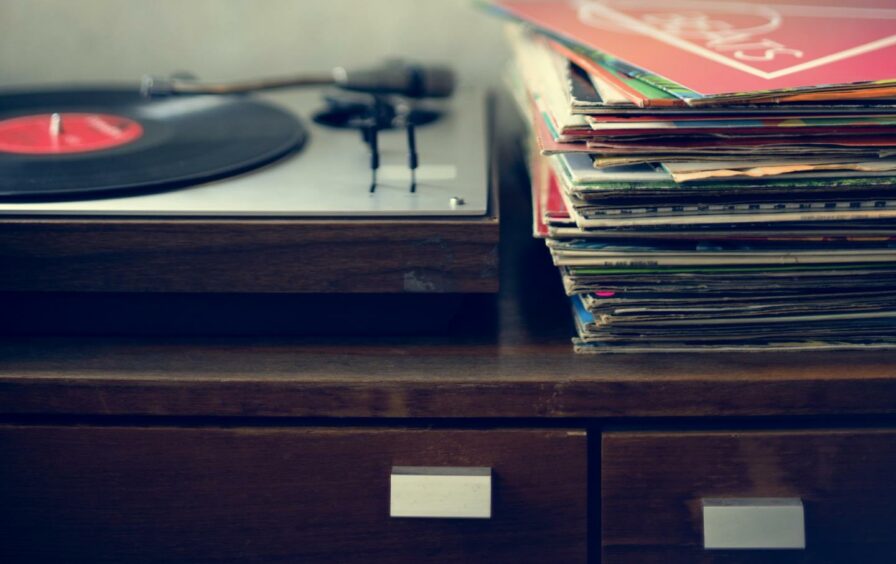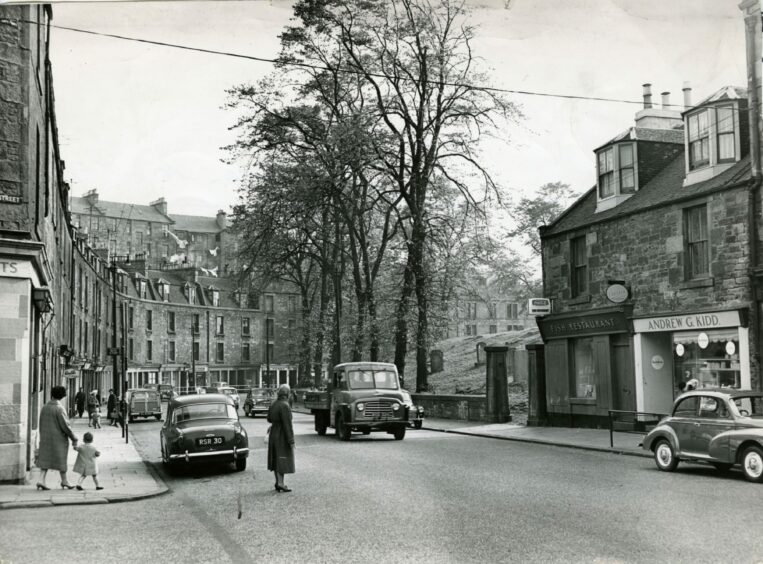I like vinyl records. CDs too, but vinyl is best. I don’t do streaming.
I can’t relate to the idea that everything should be in one place. It diminishes the individual performance, the individual performer.
So you can understand, perhaps, why Neil Young and Joni Mitchell just went up in my estimation.
Music is one of the true essentials of the human condition, along with health, food, clean water, fresh air, nature and a roof to call home.
And our music-listening habits deserve infinitely more thoughtful custodians than Spotify.
So Neil Young and Joni Mitchell’s principled decision to renounce Spotify and remove their music from its clutches is a light at the end of a dark tunnel.

Spotify’s streaming service is a grotesque presence in world music. In 2020 streaming platforms laid claim to 83% of the entire US music market.
But Spotify is not too picky about some of its clients.
In the same year, it paid $100million to a podcaster called Joe Rogan, whose show has been condemned in an open letter by the scientific and medical world
Critics condemned the podcast, which had a reported 200 million downloads last month, for its “misleading and false claims and unsubstantiated conspiracy theories”, particularly on the subject of anti-vaccine promotion.
Young and Mitchell can obviously afford it. But the gesture is rooted in the fact that both of them had polio in childhood, before vaccine was widely available, and remember what that felt like.
Both Neil Young & Joni MItchell suffered polio as children.
They know painfully well how much harm, suffering & avoidable death anti-vaxxers can cause. https://t.co/bFQsCLlhc3
— Rachel Clarke (@doctor_oxford) January 29, 2022
It is also a very visible example to set before the rest of the music industry.
It will be interesting to see who else has the courage to follow it – and if Joe Rogan’s pledge to try harder to reflect balanced views on his podcast will be enough to end the controversy.
A generation raised on vinyl and live performance
My pre-existing objection to Spotify is that I distrust anything so colossally impersonal presuming to cater for my taste in music.
Music to me is like blood in my veins.
I was aghast to discover that when I changed my car 18 months ago it didn’t have a CD player. Instead it is set up to accommodate Spotify.
So I drive to the radio or in silence.
Mine is a vinyl generation.
I spent the 1960s trying to be Hank Marvin while simultaneously discovering jazz and beginning the long and difficult progression from studying the piano to learning the guitar without studying.
Classical music had been with me since childhood, my mother’s legacy.
Ours was the prefab with the piano.
Before that, there was my grandmother’s piano.
My grandparents lived in a two-rooms- and-scullery tenement flat in Logie Street, Dundee, outside toilet (shared on the landing halfway up the stairs) but inside piano.
It all gave me a lifelong respect for music that goes beyond the sound in my ears. I treasure the actual performance.
I’ve played quite a bit of jazz and some folk (not recently, the voice – always quiet at the best of times – won’t hold out), nothing to write home about but enough to understand the art of performance.
I can’t walk into a café or a shop or a hotel or anywhere with piped music without tuning in, without thinking how the status of “background” music devalues the original performance.
A vinyl record contains atmosphere in every groove
I have a new record player in my life.
My LPs were stored on a shelf in a narrow cupboard that used to accommodate an old boiler. I had kept about 50 or 60, mostly jazz.
With the new player, I have liberated them and begun the process of reintroducing myself to the original performances, one by one.
And this is what vinyl does.
It takes more trouble to set up the album, to take the inner sleeve from the outer sleeve, remove the album carefully, check which side you’re putting on first, clean the side you’re playing, lift the little lever that holds the arm aloft, position the arm carefully so that the needle lands in the right place, lower the arm.
There is a pause, then there uncoils the atmosphere that lingers within all vinyls, and out of that atmosphere the actual performance springs.
Short of being in the room at the time the record was made, there is no other way of listening to music that concentrates your mind in the way a vinyl album does.
You tend to sit with the sleeve in your hand, or at least I do.
Some of them have designs and sleeve notes that are small works of art in their own right.
The sleeve notes are even in a type size most humans can read.
CDs never learned that trick.
From within my small collection there are artists I saw live, so the performance is even more treasured.
Furthermore, I interviewed Pete Townsend, Cleo Laine, and a woman you won’t remember called Adelaide Hall who began her set at the Edinburgh Jazz Festival with the words, “Here’s a song I had the pleasure of recording with Fats Waller.”
Let’s see you Spotify that.












